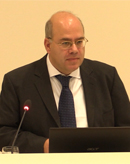Illegal treatment and disposal of waste
Landfill Directive
Directive 1999/31/EC on the landfill of waste, has a broad scope of application, and one should determine the types of waste permitted to be dumped into landfill before considering the applicable rules.
Scope of application
For the purposes of the Directive, a landfill is a “waste disposal site for the deposit of the waste onto or into land”, including the “internal disposal sites” of waste producers and sites used for temporary storage of a duration of over one year (Article 2(g)). However, the dumping of certain types of waste does not fall within the scope of the Directive, such as waste stored on a temporary basis prior to transport for recovery, treatment or disposal elsewhere, as well as waste stored prior to recovery or treatment for a period of less than three years or prior to disposal for a period of less than one year (Article 2(g)). Also excluded from the scope of the Directive is the spreading of sludge on the soil for the purposes of fertilisation or improvement, the use of inert waste as filling-in material or for construction purposes, the deposit of non-hazardous dredging sludge alongside small water ways, or that of unpolluted soil or of non-hazardous inert waste from extraction activities (Article 3(2)).
Acceptance of waste in landfill
It is no longer permitted to accept in a landfill liquid waste, corrosive, oxidising, highly inflammable or flammable waste, hospital and other clinical waste, and whole used tyres (Article 5(3) and Annex II).
In addition, any waste has to be subjected to prior treatment before entering a landfill, unless such treatment is not technically feasible or does not contribute to reducing the quantity of waste or the hazard to human health or the environment (Article 6(a)). The CJEU analysed this requirement to rule that the Member States are required to take all necessary steps in order that a treatment is applied to all wastes suitable for receiving such treatment, which must reduce as much as possible adverse impacts for the environment and the resulting risks for human health, during the entire life of the landfill. They have a duty to ascertain and implement the most appropriate treatment, including the stabilisation of the waste’s organic content, so as to reduce as much as possible the adverse impact of waste on the environment and, therefore, on human health (Case C-323/13 European Commission v Italian Republic).
The acceptance of waste in a given landfill depends on the class to which the landfill belongs: most notably, there are landfill sites for hazardous waste (Article 6), and others for inert waste (Article 4).
The operator of a landfill must charge holders their share of the costs for operating the landfill, decommissioning it and monitoring it during and for thirty years after its closure, and he must provide the competent authority with a financial guarantee covering all these costs when initially applying for the permit to operate the landfill (Article 8 and Article 10).


Christoph Sobotta
Click here to take the quiz to this e-presentation.